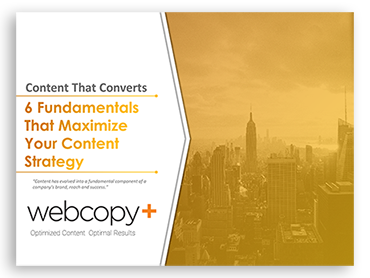
Poorly structured web content is misleading and wastes millions of hours daily. For today’s 1.2 billion Internet users, that translates to frustration. For business, it means missed opportunities.
Is your website optimized for visitors? If your site contains complicated navigation, confusing classifications, self-centric web copy, outdated information and counter-intuitive designs, probably not.
It’s All About the Customer
What you want to say is not important; it’s all about what the customer wants to do. What is he or she striving to attain or achieve? That defines a task. It might be to find a real estate agent, book a hotel room or purchase software.
If the task is completed on your website, your visitor wins — and so do you.
Website Architecture Matters
The labels and navigation structure used by the website, known as the website or information architecture, is what visitors use find information and complete tasks. Properly designing, user-testing and implementing the website architecture is critical to a successful website.
“If an Internet user can’t find what they are looking for, or don’t feel confident they can accomplish tasks using your website, their confidence and your credibility are affected,” stated usability expert and interaction designer Linda Francis, a senior consultant at Fandango Group. “Only a site with the right information architecture combined with easy-to-use task paths will inspire visitors to come back to your site and imbue them with a positive impression of your company and its products and services.”
Internet users are constantly bombarded and often overwhelmed by vast layers of disjointed information on the Web. Don’t fuel the chaos.
Instead, structure information and lay out task steps in an intuitive manner to help visitors find the information they need and complete tasks, so they can get on with their busy lives.
Arrange your website’s navigation, information and links according to the target audience’s needs rather than your company’s structure. This is one of the most common and costly mistakes on the Web. Your website is not an organizational chart, so don’t make it mimic one.
Keep It Simple
Case in point: a U.S.-based merger and acquisitions firm that recently approached Webcopyplus for help had a page dedicated to each of its departments. That’s how they wanted to present information. But was it logical from a potential client’s perspective? Not by a long shot. Visitors had to jump blindly to different sections of the website, merely guessing where they might uncover answers.
The solution: overhaul the website architecture and content to cater to visitors’ specific needs: sell a business; buy a business; additional services. Simple. While the nature of their business is complicated, getting visitors to information relevant to their needs doesn’t have to be.
Good Information Flow = Completed Tasks
Visitor-centered website architectures increase satisfaction and productivity for customers and businesses alike.
The right website architecture means fewer clicks to get desired information and less effort to complete tasks. You’re telling visitors you care. Bad website architecture sends your visitors a completely different message: get lost.
What are you telling your visitors?






Leave a Reply